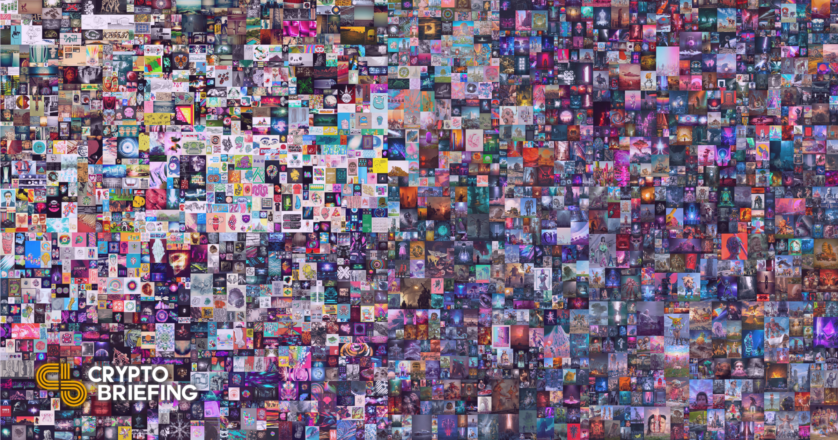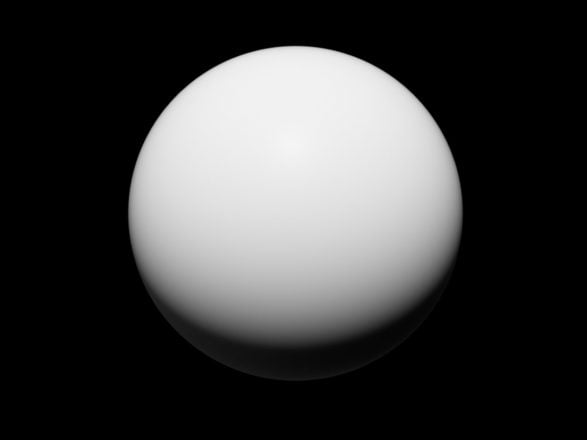Opinion: Why Won't Wikipedia Classify NFTs as Art?
Editors of the online encyclopaedia have voted not to include some NFTs on the website’s list of most expensive artworks by living artists.

Key Takeaways
- Wikipedia editors have removed NFT art by Pak from the site's list of most expensive artworks by living artists.
- Editors state that they made the change because the work was sold fractionally and because of a lack of secondary sources.
- The decision has caused uproar in the NFT community with many prominent figures arguing against the move.
Share this article
Wikipedia doesn’t want to acknowledge NFTs as art. Join Crypto Briefing as we dive into the reasons behind the controversial decision and the reactions and counterarguments from the NFT community.
Wikipedia Fades NFT Art
A fierce debate is raging in the depths of Wikipedia’s countless articles and stubs.
Editors of the world’s premier online encyclopaedia have weighed in on whether NFT artworks such as Beeple’s Everydays: The First 5,000 Days and Pak’s Merge should be included on the site’s list of most expensive auctioned artworks by living artists.
Beeple, the pseudonym of digital artist Mike Winkelmann, put NFTs on the mainstream map in March 2021 after his collagic Everydays: The First 5,000 Days sold for $69.34 million in a Christie’s auction. More recently, Pak, another digital artist credited for having given Beeple his first primer on selling NFTs, broke his pupil’s record when he sold an NFT artwork called Merge for a combined $91.8 million through digital art auction platform Nifty Gateway.

Although both Beeple and Pak are widely recognized as digital artists, there is much debate over whether their NFTs should be viewed as art. “I think they should not. NFTs have their own list,” said one editor who goes by the name jonas. Several more editors agreed, citing a lack of secondary sources and the fact that not all NFTs that exist are being sold as art.
Others have pushed back. One user posting under the pseudonym Hocus00 highlighted that several major publications such as The Wall Street Journal, The New York Times, and Forbes have all referenced Beeple’s NFT sale as the third most expensive work from a living artist ever sold at auction. As editors have frequently pointed out during the discussion, Wikipedia’s entries should aim to be based on multiple corroborating sources, not the personal opinions of its contributors.
Some users approached the issue from a more fundamental perspective. “If we agree Beeple and Pak are artists, why would their sales not count on this list?” wrote an editor who identifies as Pmmccurdy. “I don’t understand the logic here.”
However, as the conversation progressed, the posts became more and more opinionated. Newer contributions to the discussion resembled heavily charged tirades. One user called FibrielSolaer wrote:
“Purchasing via NFT is not in any way purchasing art; purchasing NFT is pretending to purchase art. NFT is a trendy new scam that targets people who are unable to tell reality from ideals, such as young children.”
The crux of the argument against NFT artworks looks to come down to how the underlying technology functions. Several editors have taken issue with the fact that lines of code on a blockchain that represent digital ownership are not the same as the artwork they represent. Additionally, many NFT artworks are solely digital, without a corresponding physical copy. This also seems a point of contention that some contributors think rules NFTs out from being “true” artworks.
After weeks of posting, five out of six editors discussing the issue reached a consensus; Beeple’s Everydays would stay on Wikipedia’s list of most expensive artworks by living artists but with a caveat. Editors have attached a note describing the sale as “a promotion to increase the value of Ethereum.” However, Pak’s Merge would be axed, mainly because the only source currently citing the sale as NFT artwork was Nifty Gateway, and because it achieved such a high value by being sold in fractions to multiple buyers. Buyers could purchase tokens starting at a unit price of $575, which increased by $25 every six hours. It is worth noting that the visuals for Merge are generated on-chain, making the technology behind the piece integral to it.
To the NFT community’s biggest enthusiasts, the decisions surrounding Beeple’s and Pak’s work seem arbitrary. While editors continue to dispute the minute details surrounding NFTs, one message has cropped up repeatedly: Wikipedia should not be deciding what counts as art or not—it’s up to the public to decide.
Public Reactions to Wikipedia’s Call
Believe it or not, refusing to accept new forms of artistic expression as “true” art is not a new phenomenon. The pseudonymous Twitter user @punk6529, who’s become something of a thought leader in the NFT space, pointed out that NFTs could be the next in a long line of emerging art forms to be disregarded by existing artists. They said:
“If you have read even the slightest bit of art history, there is a standard pattern that every new artistic movement is declared “not art” by the incumbents.”
In the 19th Century, Impressionist artists the world lauds over today, such as Renoir and Manet, were frequently seen as amateurs by both art critics and the public. This refractory attitude to new forms of artistic expression didn’t end with Impressionism; over the next two centuries, nearly every major art movement, from Kandinsky’s surrealism to Pollock’s abstract expressionism, was initially written off and separated from pre-existing conceptions of art.
Another NFT collector who goes by the name @nfttank compared the work of prominent NFT artist XCOPY to contemporary modern artists whose work is currently classed as art by Wikipedia.
Find the only piece that @Wikipedia voted as "not art".@XCOPYART pic.twitter.com/hzx7iwL1wb
— Tank (@nfttank) January 21, 2022
Among the line-up is Marcel Duchamp’s Fountain, an inverted white urinal first created in 1917. Ironically, while Fountain is now widely recognized as a major landmark in 20th Century art, it was somewhat predictably snubbed at the time of its creation.
When comparing the attitudes toward Duchamp’s art over 100 years ago and NFTs today, there are striking similarities. Both occupy a new medium that was not traditionally considered art. Duchamp used everyday items, while NFT artists use blockchains.
Additionally, Duchamp’s art was initially only understood by those with a deep appreciation of the contemporary art world of the time. Likewise, the most ardent supporters of NFTs often possess extensive knowledge of blockchain technology that the average person is not familiar with.
While many have pointed out the hypocrisy of Wikipedia’s rulings, others have highlighted the potential negative effects of separating NFTs from art. Nifty Gateway co-founder Duncan Cock Foster took to Twitter following the Wikipedia editors’ decision to express his thoughts, stating:
“Wikipedia works off of precedent. If NFTs are classified as ‘not art’ on this page, then they will be classified as ‘not art’ on the rest of Wikipedia. Wikipedia is the global source of truth for many around the world. The stakes couldn’t be higher!”
In the past, while critics often snubbed emerging art forms, the evaluation of any one person was not definitive. This allowed others in the art world to change minds with sound arguments. Over time, the attitudes toward these art forms became less conservative, resulting in their eventual acceptance.
However, in the case of Wikipedia, the online encyclopaedia prides itself on being a source of authoritative knowledge. If editors are willing to set a precedent on such a subjective matter, it could do years worth of damage to artists exploring NFTs as a new medium for art.
Fortunately, it appears that the uproar from the NFT community has not gone unheard. Wikipedia editors have agreed to revisit the conversation over whether NFTs should be classed as art later, leaving the door open to further discussion.
Disclosure: At the time of writing this feature, the author owned ETH and several other cryptocurrencies.
Share this article
